Discover 35 hidden attractions, cool sights, and unusual things to do in Lima (Peru). Don't miss out on these must-see attractions: Larco Museum, Government Palace, and Plaza de toros de Acho. Also, be sure to include Park of the Reserve in your itinerary.
Below, you can find the list of the most amazing places you should visit in Lima (Lima Province).
Table of Contents
Larco Museum

Also known as: Museo Arqueológico Rafael Larco Herrera
Museum of pre-Columbian artifacts. The Larco Museum is a privately owned museum of pre-Columbian art, located in the Pueblo Libre District of Lima, Peru. The museum is housed in an 18th-century vice-royal building. It showcases chronological galleries that provide a thorough overview of 5,000 years of Peruvian pre-Columbian history. It is well known for its gallery of pre-Columbian erotic pottery.[1]
Address: Av. Simón Bolivar 1515, 15084 Pueblo Libre (Lima Residencial)
Government Palace
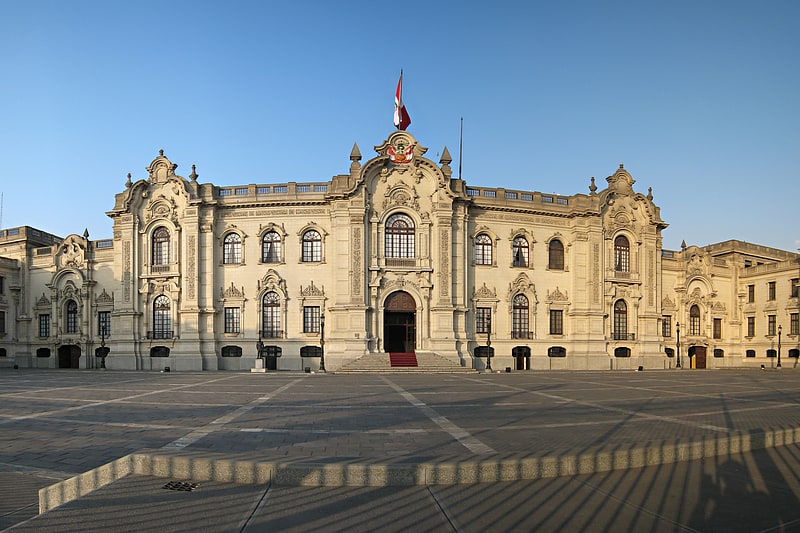
Also known as: Palacio de Gobierno del Perú
Palace and official presidential residence. The Government Palace, also known as the House of Pizarro, is the seat of the executive branch of the Peruvian Government, and the official residence of the President of Peru. The palace is a stately government building, occupying the northern side of the Plaza Mayor in Peru's capital city, Lima. Set on the Rímac River, the palace occupies the site of a very large huaca that incorporated a shrine to Taulichusco, the last kuraka of Lima.
The first Government Palace was built by Francisco Pizarro, governor of New Castile, in 1535. When the Viceroyalty of Peru was established in 1542, it became the viceroy's residence and seat of government. The most recent alterations to the building were completed in the 1930s, under the direction of President Oscar R. Benavides during his second term of office. The chief architects were Claude Antoine Sahut Laurent and Ricardo de Jaxa Malachowski.
A number of ceremonial guard units of the Peruvian Armed Forces are stationed at the Palace, and participate in the daily Changing of the Guard ceremony and other official duties.[2]
Address: Plaza Mayor, Lima (Lima Central)
Plaza de toros de Acho

Bullring in Rímac District, Peru. The Plaza de Toros de Acho is the premier bullring in Lima, Peru. Located beside the historical center of the Rímac District, the plaza is classified as a national historic monument. It is the oldest bullring in the Americas and the second-oldest in the world after La Maestranza in Spain. It opened on 30 January 1766.
Of the 56 official bullrings in Peru, the Plaza de Acho ranks most prominently. It has a seating capacity of 13,700 and was constructed of adobe and wood, both traditional materials.[3]
Address: Jr. Hualgayoc 332, Lima (Lima Central)
Park of the Reserve
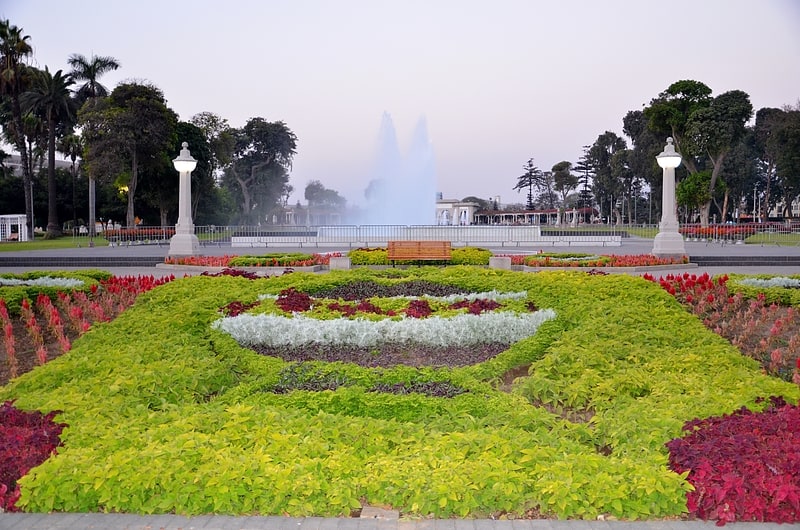
Also known as: Parque de la Reserva
Park in the Lima District, Peru. The Parque de la Reserva is a park located in downtown Lima, in Peru. Built in an irregular shape, it is located between two of the city's principal streets, the Paseo de la Republica expressway and Arequipa Avenue.[4]
Address: Av. Petit Thouars, 1 Cercado de Lima (Lima Central)
Huaca Pucllana

Ruins of a pre-Incan pyramid. Huaca Pucllana or Huaca Juliana is a great adobe and clay pyramid located in the Miraflores district of central Lima, Peru, built from seven staggered platforms. It served as an important ceremonial and administrative center for the advancement of the Lima Culture, a society which developed in the Peruvian Central Coast between the years of 200 AD and 700 AD.
With the intended purpose of having the elite clergymen (who politically governed several valleys in the area) express their complete religious power and ability to control the use of all the natural water resources (saltwater and freshwater) of the zone, a Great Pyramid was constructed in the Huaca.
As a whole, the structure is surrounded by a plaza, or central square, that borders the outer limits, and by a large structured wall dividing it into two separate sections. In one section there were benches and evidence of deep pits where offerings of fish and other marine life took place in order to attain the favor of the gods. The other section is an administrative area. This area contains various small clay structures and huts made of adobe–with some walls still standing–whose function seemed to be to act as the courtyards and patios of the enclosure which is over 500 meters in length, 100 in width and 22 in height.
Other remains have been uncovered belonging to the Wari Culture (500 – 1000 AD), which was a direct influence on the Lima Culture society towards the ends of its time period. Of particular note are the remains of the “Señor de los Unkus” (The Lord of the Unkus), which belonged to the first tomb within the ceremonial center to have been discovered completely intact. This tomb holds three separate burial shrouds containing the remains of three adults–two of which have masks–and those of a sacrificed child.[5]
Address: Calle General Borgoño 784, 15074 Miraflores (Lima Residencial)
Plaza Mayor
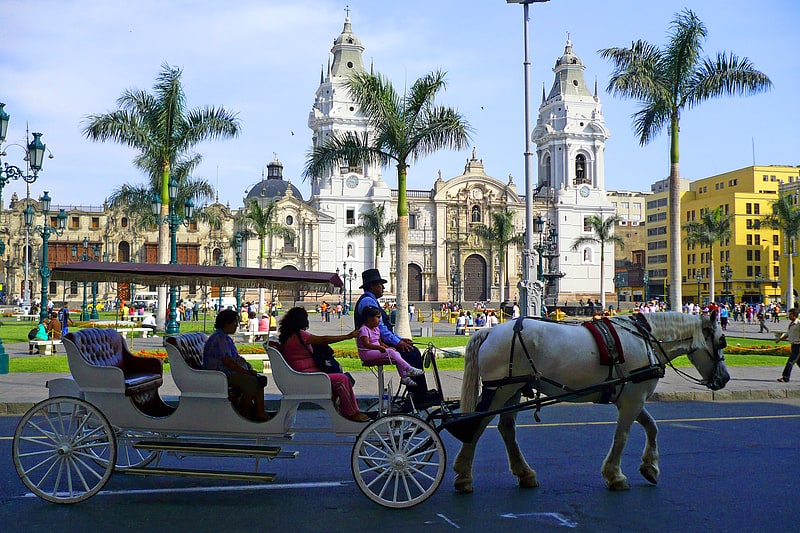
Scenic plaza and birthplace of Lima. The Plaza Mayor de Lima or Plaza de Armas de Lima, is the birthplace of the city of Lima, as well as the core of the city. Located in the Historic Centre of Lima, it is surrounded by the Government Palace, Lima Metropolitan Cathedral, Archbishop's Palace of Lima, the Municipal Palace, and the Palacio de la Unión.[6]
Address: Jr. Junin and Jr. Carabaya, Lima (Lima Central)
Palacio Municipal
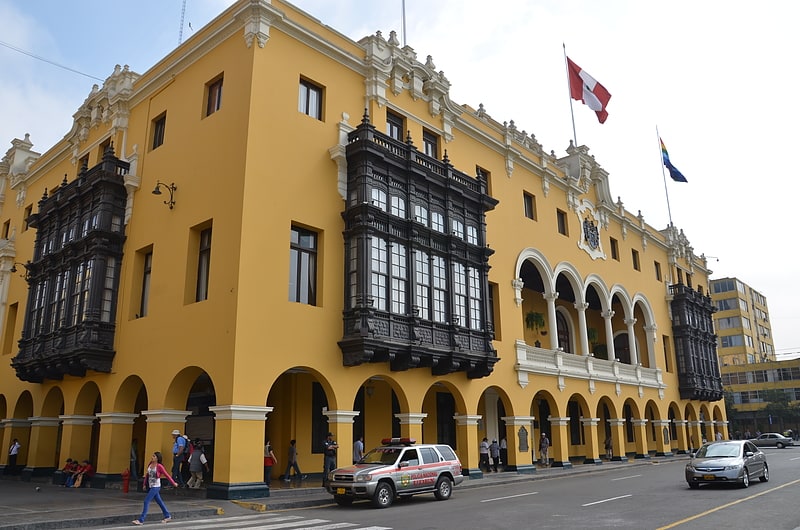
Building in the Lima District, Peru. The Palacio Municipal de Lima or City Hall of Lima is a public building that serves as headquarters of the Metropolitan Municipality of Lima. It is located on the street Portal de Escribanos, block 3 of Jirón de la Unión, and in front of the Plaza Mayor of Lima's historic centre.[7]
Address: Jiron de la Union 300, Lima 1 Lima (Lima Central)
Park of the Exposition
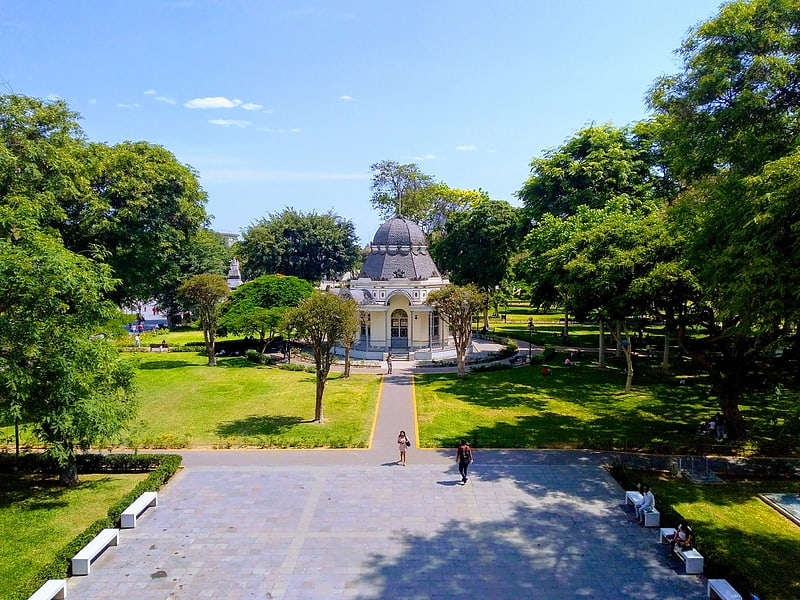
Also known as: Parque de la Exposición
Park in the Lima District, Peru. The Park of the Exposition is a park located in the Santa Beatriz neighborhood of downtown Lima, capital of Peru.[8]
Address: Av 28 de Julio, 01 Lima (Lima Central)
Parque de las Leyendas
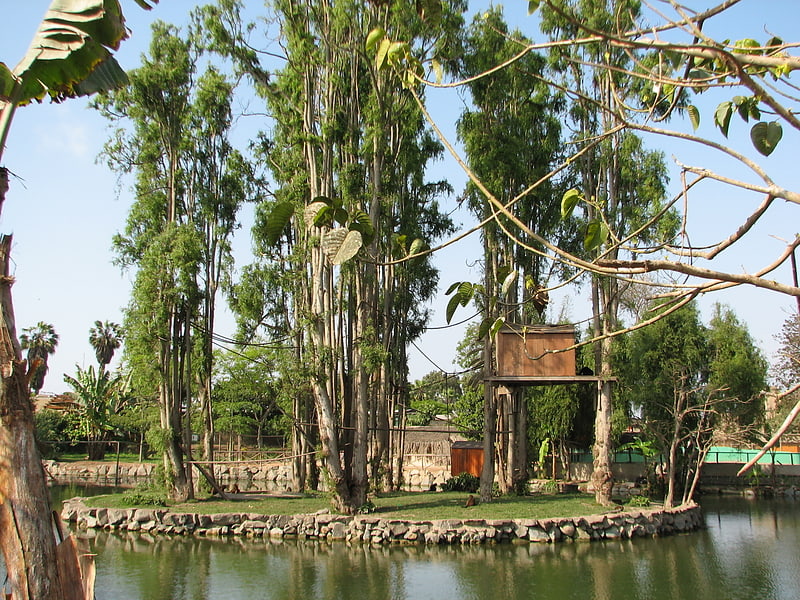
Zoo in Peru. Parque de las Leyendas is a zoo in the San Miguel district of Lima, Peru. The zoo contain 215 species of mammals, reptiles and birds, with a total of 2071 animals.[9]
Address: Av. Parque de las Leyendas 580, 32 San Miguel (Lima Residencial)
Museum of the Nation
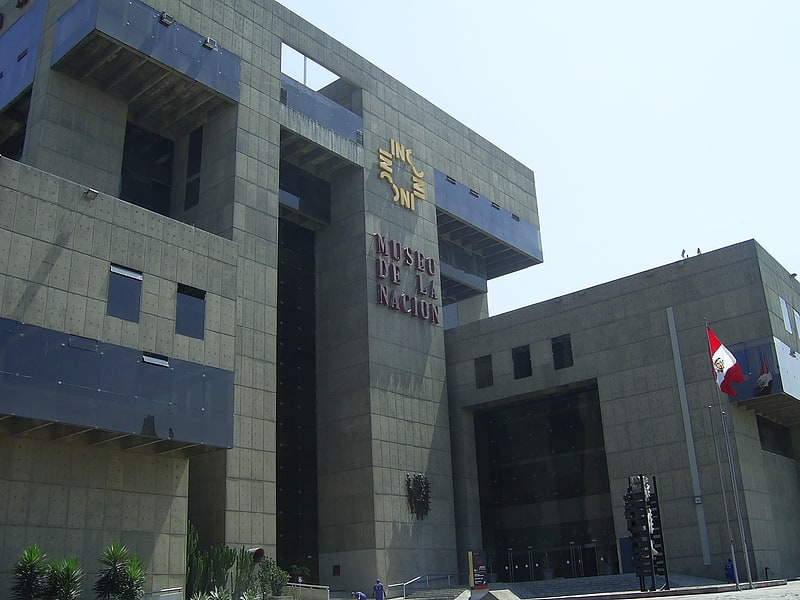
Also known as: Museo de la Nación
Museum in the San Borja District, Peru. The Museo de la Nación is one of two major museums of Peruvian history in Lima, Peru. It is much larger than the other main museum in Lima, the Peruvian National Museum of Archaeology, Anthropology, and History. Currently it is no longer being used as a museum, carrying only very esporadical exhibitions.
The Museum of the Nation housed thousands of artifacts spanning the entire span of human occupation in Peru, including an impressive collection of Moche, Nazca, and Wari ceramics. The museum also houses reproductions of many famous ancient Andean artifacts, most notably the Lanzón from Chavín de Huantar; a recreation of the burial chamber of the Lord of Sipan (El Señor de Sipán); and the famous Revolt of the Objects Mural. However it is closed and being treated as the office of the Ministry of Culture.
The only permanent exhibit that remains open is on the 6th floor of the museum which houses the photographic exhibit Yuyanapaq. Para Recordar. This exhibit was created by the Truth and Reconciliation Commission to document the internal conflict in Peru that occurred from 1980 to 2000 involving the Shining Path.[10]
Address: Av. Javier Prado Este 2465, 15021 San Borja (Lima Residencial)
Museo de Arte Italiano
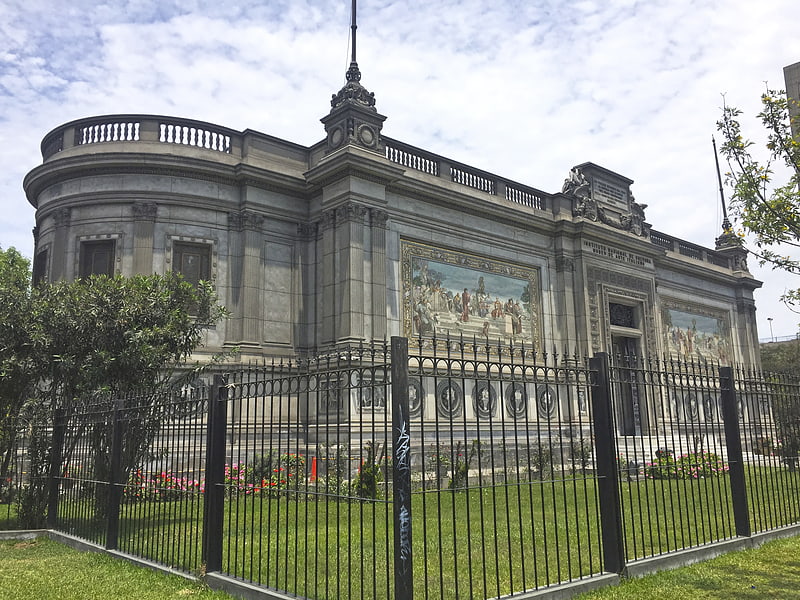
Museum in the Lima District, Peru. The Museum of Italian Art is a public museum in Lima, Peru, under the administration of the National Culture Institute. It's the only European arts museum in Peru.[11]
Address: Av Paseo de la República 250, 15001 Cercado de Lima (Lima Central)
Polvos Azules
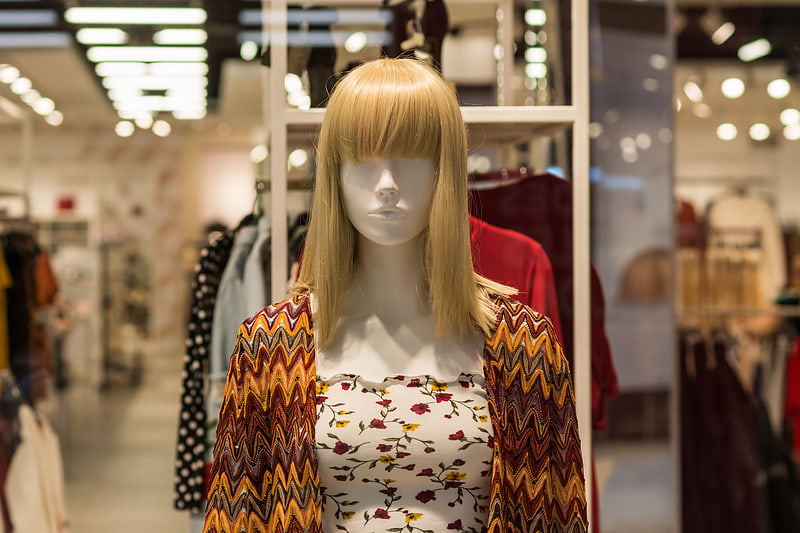
Shopping centre, Shopping, Gift shop, Flea market
Address: Av Paseo de la República, 15033 Cercado de Lima (Lima Central)
Presbítero Maestro

Also known as: Cementerio Presbítero Matías Maestro
City cemetery with day and night tours. The Cementerio Presbítero Matías Maestro is a cemetery in Lima, the capital city of Peru. It is also a museum, though attempts to make it a museum exclusively have failed. The architectural styles of the mausoleums found within are broad ranging. It houses the remains of several important political, military and literary figures. Most prominent of all the mausoleums is the Panteón de los Próceres where heroes of the War of the Pacific are buried. The mausoleum's entrance reads "La Nación a sus Defensores".[12]
Address: Jirón Ancash 122, 15003 Cercado de Lima (Lima Central)
Iglesia de Santa Liberata

Church in Rímac District, Peru. The Iglesia de Santa Liberata is a Catholic church located in Alameda de los Descalzos in Rímac District, Lima, Lima Region, Peru.
The church was first built in 1716. In 1745, the Cruciferous Fathers of Good Death took control over the church until 1826 and made many changes, along with architectural improvements.[13]
Address: Jirón Atahualpa, Lima (Lima Central)
Palacio de Justicia

Building in the Lima District, Peru. The Palace of Justice is the seat of the Supreme Court of Peru. It is located in the Lima District of the city of Lima, capital of Peru. Construction started during the second government of Augusto B. Leguía and finished under the presidency of Óscar R. Benavides, who inaugurated the building in the late 1930s. The Palace was built in a neoclassical style as its plans were based on those of the Law Courts of Brussels, Belgium, work of Joseph Poelaert. However, it lacks the dome of its Belgian counterpart.[14]
Address: Av. Paseo de la República s/n, 01 Cercado de Lima (Lima Central)
Cathedral Basilica of St. John the Apostle and Evangelist
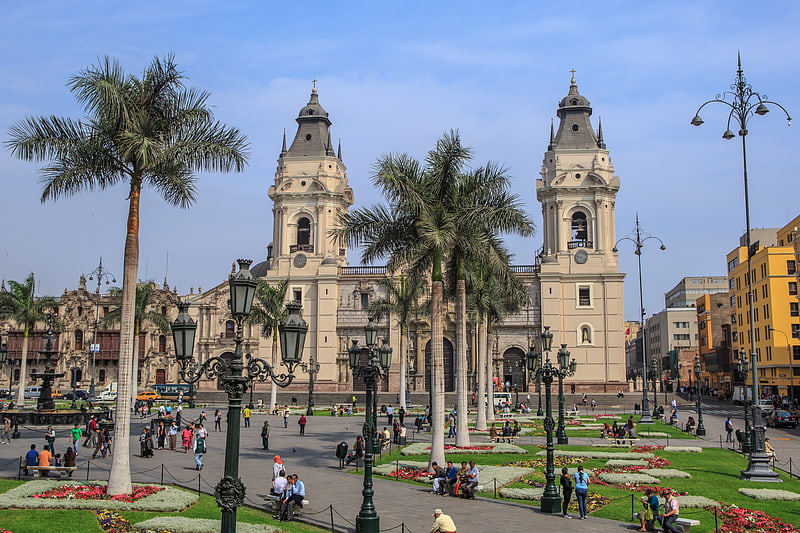
Also known as: Catedral de Lima
Ornate Catholic church with a museum. The Basilica Metropolitan Cathedral of Lima and Primate of Peru, otherwise Lima Metropolitan Cathedral, is a Roman Catholic cathedral located in the Plaza Mayor of downtown Lima, Peru. This third and current Cathedral of Lima was built between 1602 and 1797. It is dedicated to St John, Apostle and Evangelist.[15]
Address: Jirón Carabaya, 15001 Cercado de Lima (Lima Central)
Plaza San Martín
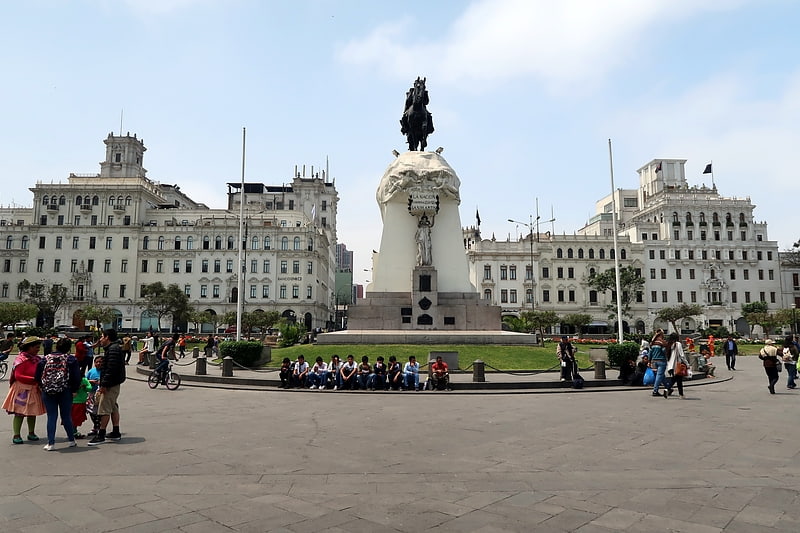
Urban square with monument and green space. The Plaza San Martín is one of the most representative public spaces of the city of Lima, Peru. It is located at the ninth block of Colmena avenue, within the Historic Centre of Lima which was declared a World Heritage Site in 1988 by UNESCO. It is located near the Plaza Mayor of Lima and is connected to it by the Jiron de la Union. Its central monument gives homage to Peru's liberator, José de San Martín.[16]
Address: 9th block of Jirón de la Unión, Lima (Lima Central)
Centro Cultural de San Marcos
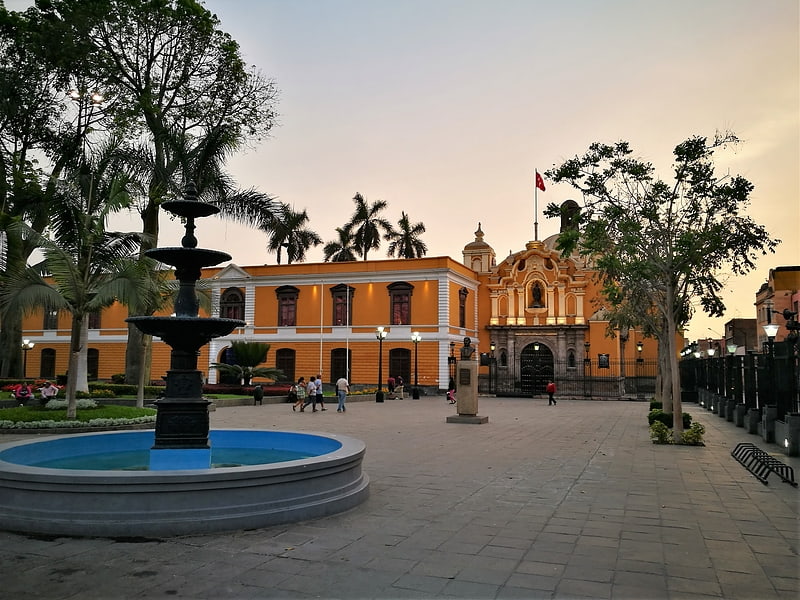
Building. The Casona de la Universidad Nacional Mayor de San Marcos, also known as Cultural Center of the National University of San Marcos, is a large Colonial building in the city of Lima, Lima Region, Peru, where the main cultural center of the University of San Marcos operates. It currently houses various entities of importance to the university institution as a whole, such as: the Museum of Art, the Museum of Archeology and Anthropology, the University Theater of San Marcos, the España de las Artes Library and the directions of Ballet, Folklore, Music, Film and Television, Band and Orchestra, and Tourism. The set of the "Casona de la Universidad de San Marcos" -which includes the famous "University Park" on its outside-, of undeniable historical and cultural importance for the city, it is part of the area and of the list of buildings of the historic center of Lima that were recognized as a World Heritage Site by UNESCO, in 1988.
La Casona de San Marcos is one of the most important buildings of Lima, both from the historical and architectural point of view.
Located in the old building of the Noviciado de San Antonio Abad and of the Real Convictorio de San Carlos, and popularly known under the name of Casona de San Marcos, it is the oldest of the seats currently occupied by the University and one of the most important non-religious historical buildings in the city of Lima. Founded as a Jesuit novitiate, it became the university's headquarters between 1875 and 1966, when most of its administrative offices were moved to the campus of the University City. The Casona de San Marcos is the main reference of the cultural and artistic activity of the university, and one of the best preserved constructions of the colonial era in Lima.[17]
Museo de Arte de Lima
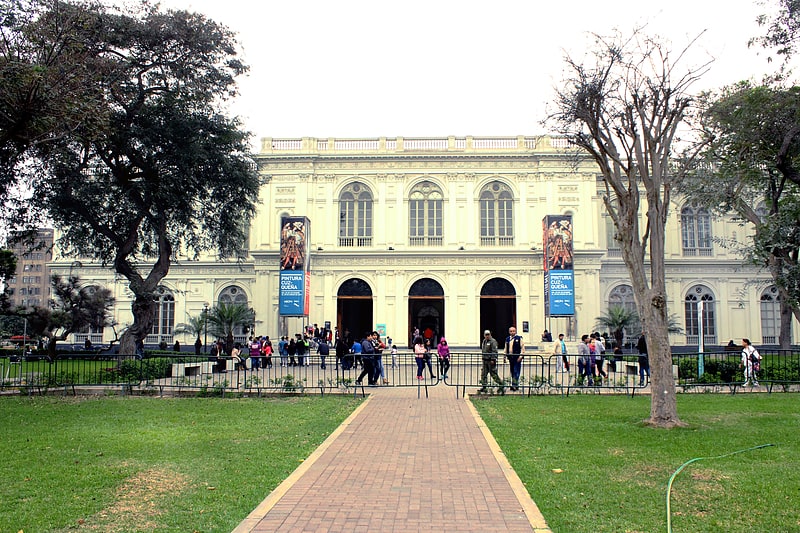
Museum in the Lima District, Peru. The Lima Art Museum is an art museum in Lima, Peru. The museum is located in the Palacio de la Exposición. The museum was inaugurated in 1961. The collection includes ceramics and textiles. MALI is a private organization supported by admission fees, contributions from members, and private donations.
In 2015, the museum opened its renovated galleries on the second floor of the Exhibition Palace, showcasing some of the collection's most important items. These galleries survey almost 3,000 years of history, from pre-Columbian textiles and pottery, to mid-twentieth century painting. The museum's contemporary art collection, numbering more than 1,000 works, is still largely kept in storage pending the development of a new wing.
The museum has been involved in the development of new research on Peruvian art history, housing one of the most extensive art archives in the region. The MALI has an active program of temporary exhibitions throughout the year, covering local and international artists. Past exhibitions have included Gordon Matta Clark, Milagros de la Torre, Martin Creed, Gerhard Richter, Wolfgang Tilmans, Martin Chambi, Annie and Josef Albers, Francis Alÿs, Fernando Bryce, Marcel Odenbach, Jorge Eduardo Eielson, among others.[18]
Address: Paseo Colón 125, 1 Cercado de Lima (Lima Central)
Gold Museum of Peru and Weapons of the World
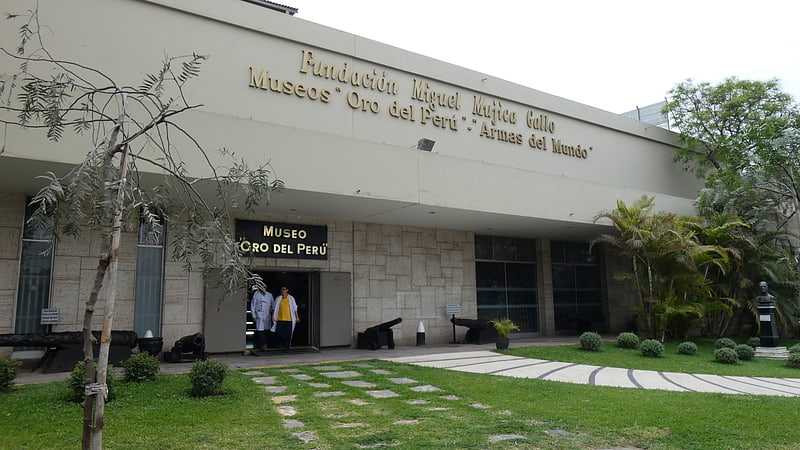
Also known as: Museo Oro del Perú y Armas del Mundo
Gold objects and weaponry museum. The Gold Museum of Peru and Weapons of the World is a Peruvian museum, located in Lima.[19]
Address: Jr. Alonso de Molina 1100, 15023 Santiago de Surco (Lima Residencial)
National Museum of Archaeology, Anthropology and History of Peru
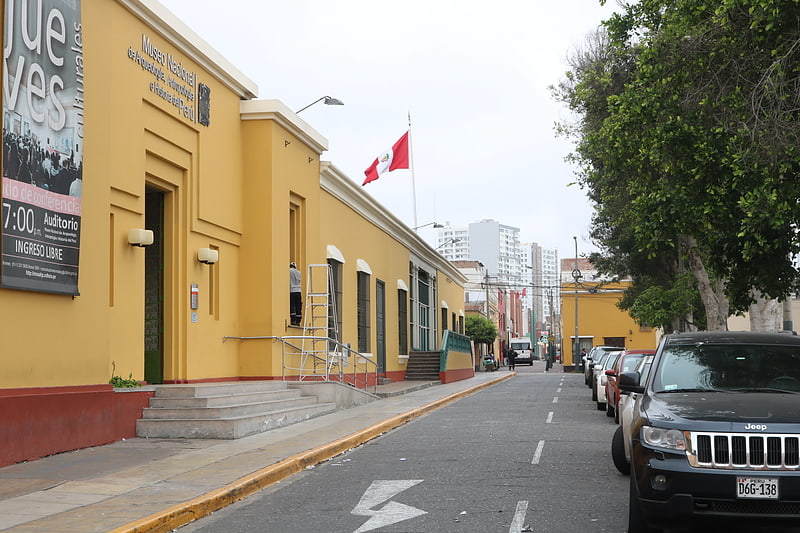
Also known as: Museo Nacional de Arqueología, Antropología e Historia del Perú
Archaeology and anthropology exhibits. The Museo Nacional de Arqueología Antropología e Historia del Perú is the largest and oldest museum in Peru, located on Plaza Bolívar in the Pueblo Libre district of Lima. The museum houses more than 100,000 artifacts spanning the entire history of human occupation in what is now Peru. Highlights include the Raimondi Stele and the Tello Obelisk from Chavín de Huantar, and an impressive scale model of the Incan citadel, Machu Picchu.
In 2021, the new National Museum of Archaeology (MUNA) is destined to open after artifacts from the museum. The National Museum of Archaeology, Anthropology, and History is proposed to become a museum dedicated to the republican era of Peru.[20]
Address: Plaza Bolivar s/n, 21 Pueblo Libre (Lima Residencial)
Monastery of San Francisco
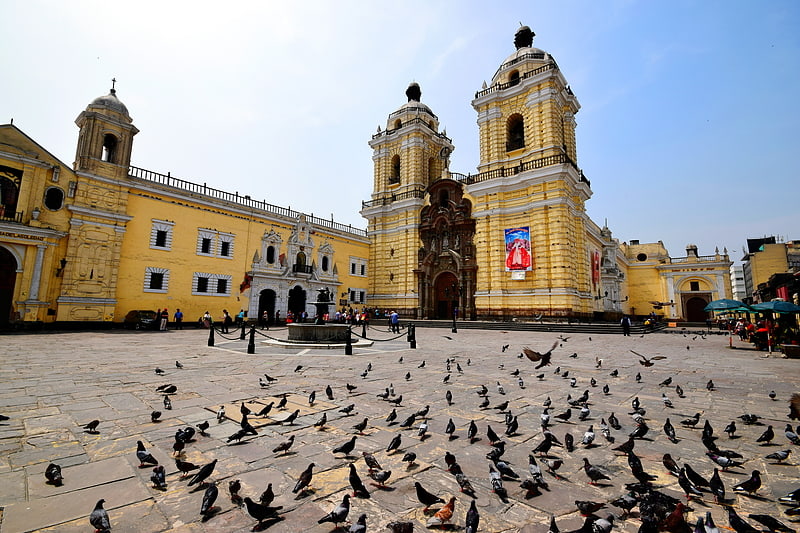
Also known as: Basílica y convento de San Francisco de Lima
Baroque Catholic church with catacombs. The monumental complex of the Basilica and Convent of San Francisco of Lima, also known as "San Francisco el Grande" or "San Francisco de Jesús", is located in the Historic Center of Lima, Peru. This church together with the Sanctuary Nuestra Señora de la Soledad and the Church del Milagro set up one of the welcoming and artistics corners of Lima. Ramón Menéndez Pidal, Spanish philologist and scholar in this regard commented: "It is the largest and noblest monument that erected in these prodigious lands the conquest".
The church and convent are part of the Historic Centre of Lima, which was added to the UNESCO World Heritage List in 1991.[21]
Address: Jr. Lampa cdra. 1, 1 Cercado de Lima (Lima Central)
La Marina Lighthouse
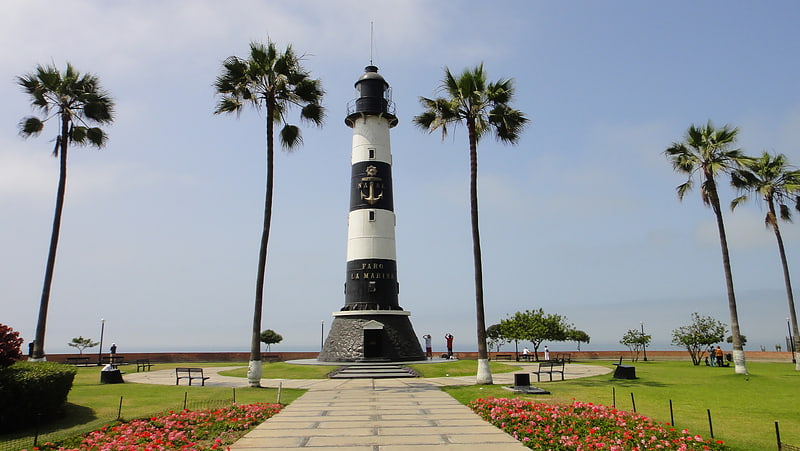
Also known as: Faro la Marina
Lighthouse in Peru. La Marina Lighthouse is an active lighthouse set in parkland on high cliffs above the Pacific Ocean, in the Miraflores district of Lima, the capital of Peru. It is one of the most famous and visited lighthouses in the country.[22]
Address: Malecón Cisneros cdra. 7, 18 Miraflores (Lima Residencial)
Palacio de Torre Tagle
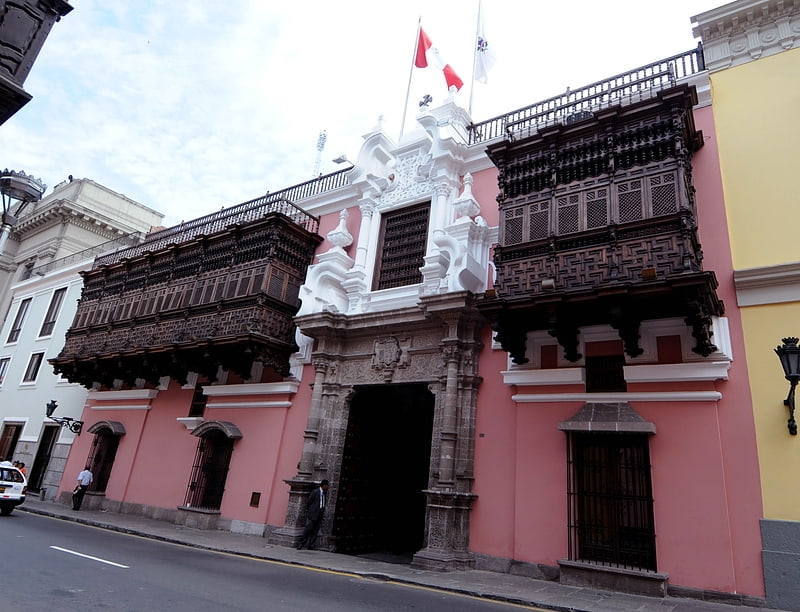
Government building in a historic palace. The Palacio de Torre Tagle is a building built during the colonial era of Peru that currently serves as the main headquarters of the Ministry of Foreign Affairs of Peru. It is located in the Jirón Ucayali in the historic center of Lima, two blocks southeast of the Plaza Mayor de Lima.
It comprises a built area of 1699 m². The materials used in the construction of the Palacio de Torre Tagle were brought from Spain, Panama and other Central American countries.[23]
Address: Jr. Ucayali 363, Lima (Lima Central)
Hipódromo de Monterrico
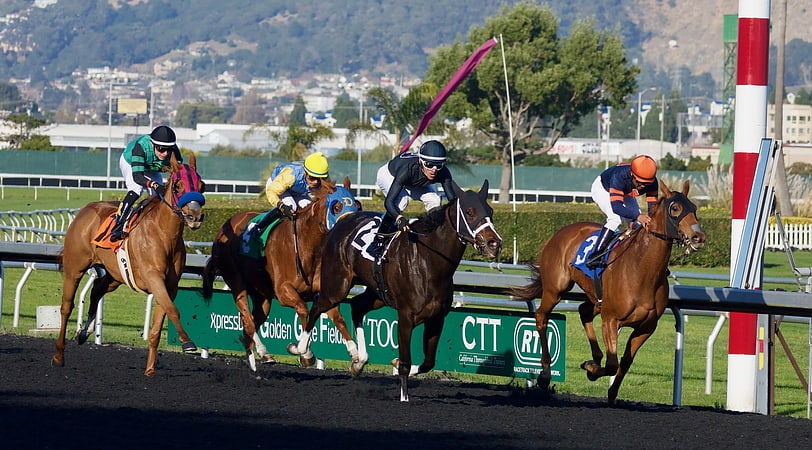
Sports facility in the Santiago de Surco, Peru. The Hipódromo de Monterrico is a Thoroughbred horse racing facility opened in 1960 in Lima, Peru. Operated by the Jockey Club del Peru, it has a one and one-eight mile dirt racetrack with a one-mile inside track for turf racing.
Major races at Hipódromo de Monterrico include the four Group One races that comprise the Peruvian Quadruple Crown:
- 1.a) es:Polla de Potrillos (Perú) - September, 1,600 metres
- 1.b) es:Polla de potrancas - September, 1,600 metres
- 2.a)Clasico Ricardo Ortiz de Zevallos - October, 2000 metres
- 2.b) Clasico Enrique Ayulo Pardo - October, 2000 metres
- 3) Derby Nacional - November, 2400 metres
- 4) Gran Premio Nacional Augusto B. Leguia - February, 2600 metres
Address: Jockey Club del Perú, 33 Surco (Lima Residencial)
Casa de Osambela
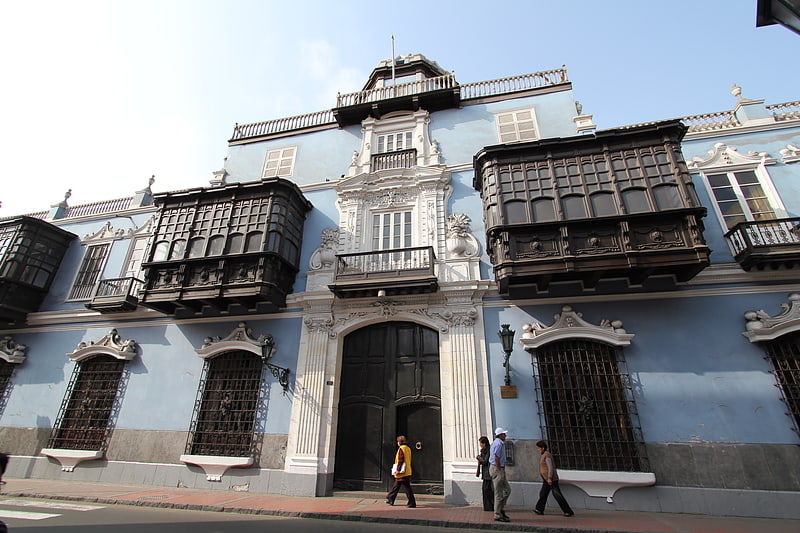
Building in the Lima District, Peru. The Casa de Osambela is a building built during the colonial era of Peru. It stands on the old Novitiate of the Dominican fathers, destroyed by the earthquake of 1746, and part of the garden, facing the Calle de la Veracruz in the historic center of the city of Lima. It is one of the largest mansions in the center of Lima and is notable for its wide façade and excellent quality balconies.
It is a late colonial building with a mixture of successive styles, its construction dates from the late-18th and early-19th centuries. It was completed between 1803 and 1805.[25]
Address: Jr. Conde de Superunda 298, Lima (Lima Central)
El Paraíso
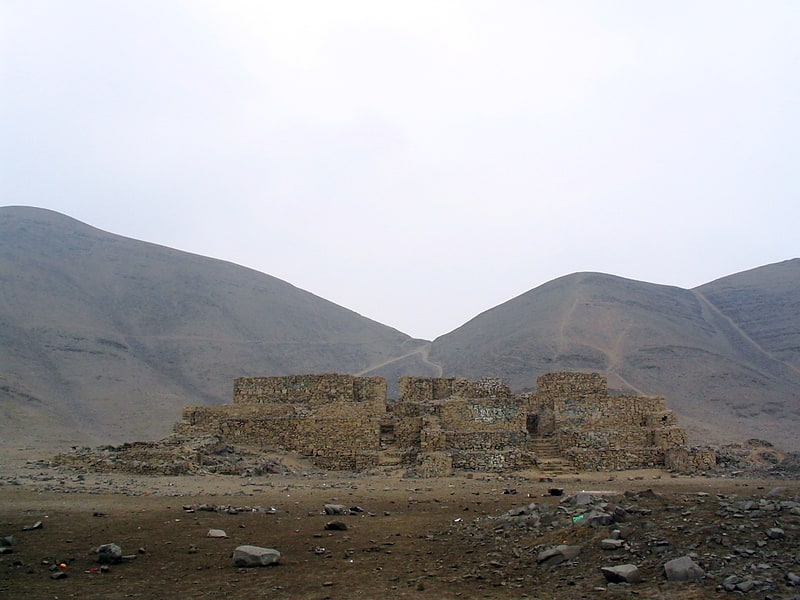
Archaeological site in San Martín de Porres District, Peru. El Paraíso is the modern name of a Late Preceramic archaeological site located in the Chillón Valley on the central coast of Peru. The site is situated several kilometers north of Lima, the capital of Peru, in the San Martin de Porres District in the Province of Lima. El Paraíso is one of the largest settlements from this period, encompassing over 58 hectares of land.
Other major centers from this period include Aspero and Caral on the northern coast in the Supé Valley. Sizable centers can be found in different ecozones, from the coast to inland areas. Stanish concluded that this was a time when settlements were broadly distributed, located at various distances from the coast allowing access to a variety of marine and agricultural resources.[26]
Address: San Martín de Porres, Perú, Lima (Lima Norte)
Huaca Huallamarca
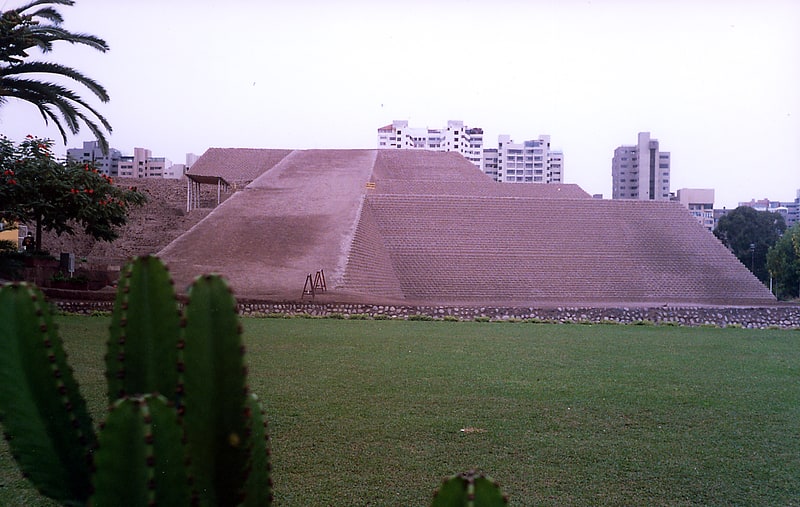
Archaeological museum in San Isidro, Peru. Huaca Huallamarca also known as Huaca Pan de Azúcar, is an archaeological site in Peru. It is located in the district of San Isidro, in the city of Lima.[27]
Address: Av. Nicolas de Rivera 201, 15073 Distrito de San Isidro (Lima Residencial)
Archbishop's Palace of Lima
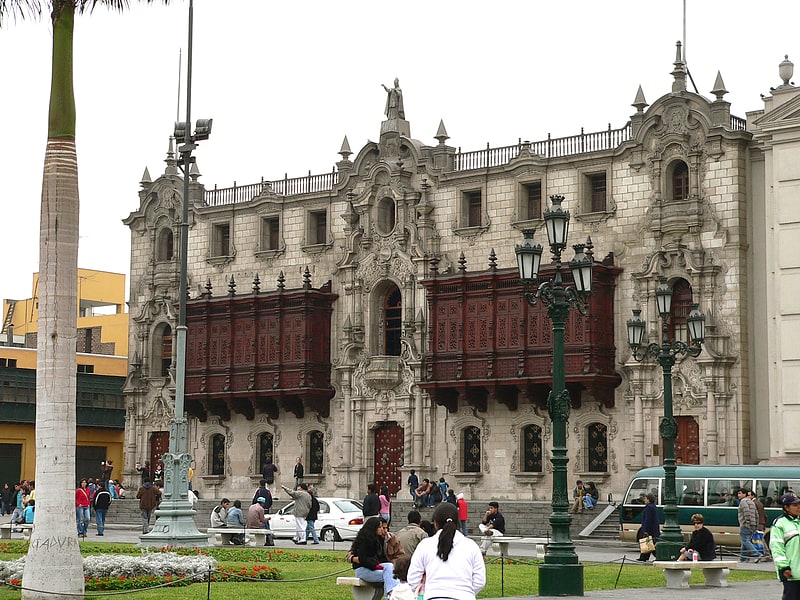
Also known as: Palacio arzobispal de Lima
Museum in the Lima District, Peru. The Archbishop's Palace of Lima, the capital of Peru, is the residence of the Archbishop of Lima, and the administrative headquarters of the Roman Catholic Archdiocese of Lima. It is located on the Plaza Mayor of Lima, in the Historic Centre of Lima.[28]
Address: Plaza de Armas, Lima (Lima Central)
Museum of Natural History

Also known as: Museo de Historia Natural
Natural history museum founded in 1918. The Natural History Museum in Lima, is Peru's most important museum of natural history. It was established in 1918 and belongs to the National University of San Marcos.[29]
Address: Arenales 1256, Jesus Maria, 15072 Lima (Lima Residencial)
Campo de Marte
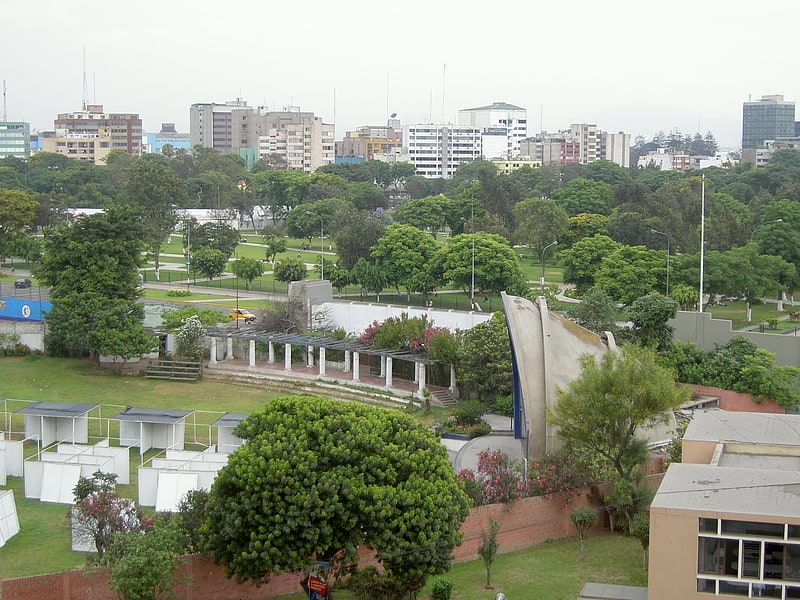
Park in Jesús María District, Lima, Peru. The Campo de Marte is one of the largest parks in the metropolitan area of Lima, capital city of Peru. Similar in size to Parque de la Exposición and Parque de la Reserva. Campo de Marte originally was part of Exposición and later a horse racetrack, the Hipódromo de Santa Beatriz, in operation from 1903 to 1938. A new racetrack, San Felipe, was built further south in Jesús María ward but the stand was allowed to remain; the track was paved over with asphalt and given the street name Avenida de la Peruanidad. The stand is currently used for spectators watching the Grand Military Parade, done every year on July 29, the day after Independence Day.
Area: 68,850 m2[30]
Address: Av. Salaverry, 11 Jesús María (Lima Residencial)
Plaza Bolognesi
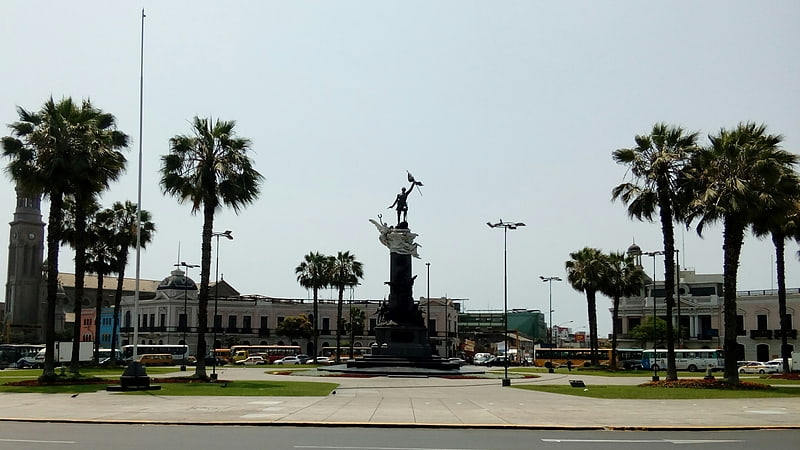
The Plaza Bolognesi is a roundabout located in the Lima District and the Breña District, in the capital of Peru. It is located at the intersection of Brasil Avenue, Arica Avenue, Alfonso Ugarte Avenue, Guzmán Blanco Avenue, and 9 December Avenue.
It is named in honor of a national hero, Colonel Francisco Bolognesi, who participated in the Battle of Arica during the War of the Pacific. It is used exclusively for the Ceremony of the Flag, which is celebrated every June 7, on Peruvian Flag Day. It was inaugurated on November 6, 1905.[31]
Address: Paseo Colón, 1 Lima (Lima Central)
MATE - Museo Mario Testino

Also known as: Museo Mario Testino
Mario Testino Museum is a non-profit organization founded by Peruvian fashion photographer Mario Testino, in 2012. It's a platform for the development of creative industries, a window for the international contemporary art in Lima and for peruvian talent to the world. MATE presents exhibitions from contemporary artists next to the permanent exhibition of Mario Testino's work.[32]
Address: Av. Pedro de Osma 409, 15063 Barranco (Lima Residencial)
Gran Teatro Nacional

Theatre in the San Borja District, Peru. The Gran Teatro Nacional del Perú is a multi-purpose theatre and concert hall in Lima, Peru. It is part of the Cultural Tridium, flanked by the National Library of Peru and the Museo de la Nación.
The theatre was inaugurated on 23 July 2011. The theatre has a capacity of up to 1500 people, and uses the latest technology in acoustics and sound engineering to support performance genres ranging from opera, philharmonic orchestras, pop stars, Broadway shows and more. The building includes rehearsal rooms, dressing rooms, restaurants, cafeteria, library and rooms for various types of events.
In July 2012 it hosted a performance of the opera-ballet Akas Kas by Peruvian composer Nilo Valerde.[33]
Address: Av. Javier Prado Este 2225, Lima 18 Lima (Lima Residencial)
Basilica and Convent of Nuestra Señora de la Merced
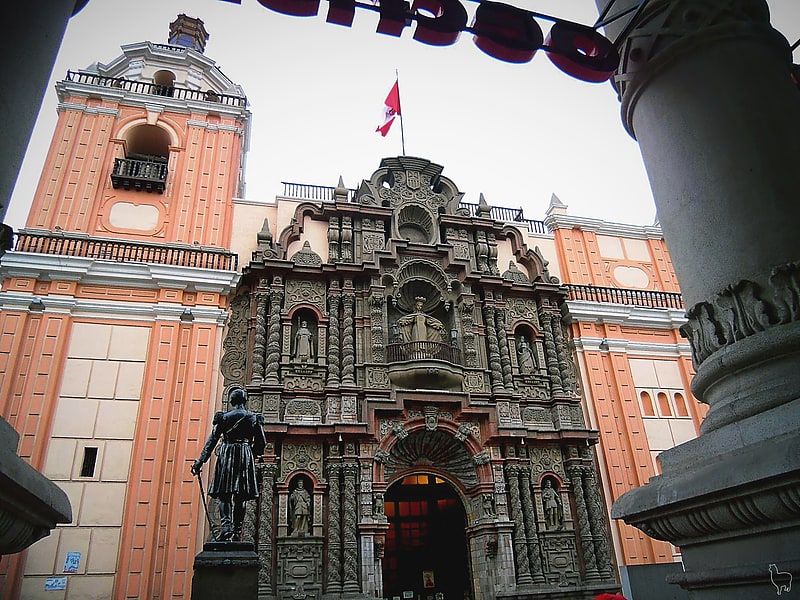
Also known as: Basílica y convento de Nuestra Señora de la Merced
Catholic church in the Lima District, Peru. The Minor Basilica and Convent of Nuestra Señora de la Merced is a Roman Catholic church located in Lima, Peru. It was designed in the Baroque style known as Churrigueresque. The church was built under the supervision of Friar Miguel de Orenes in 1535. The Blessed Virgin Mary of Mercy, the patroness of the Peruvian Armed Forces, is venerated in the Basilica. The Mercedarians, who evangelized the region, helped to develop Lima by building many of the churches preserved today.[34]
Address: Jr. de la Union, 621, Lima (Lima Central)